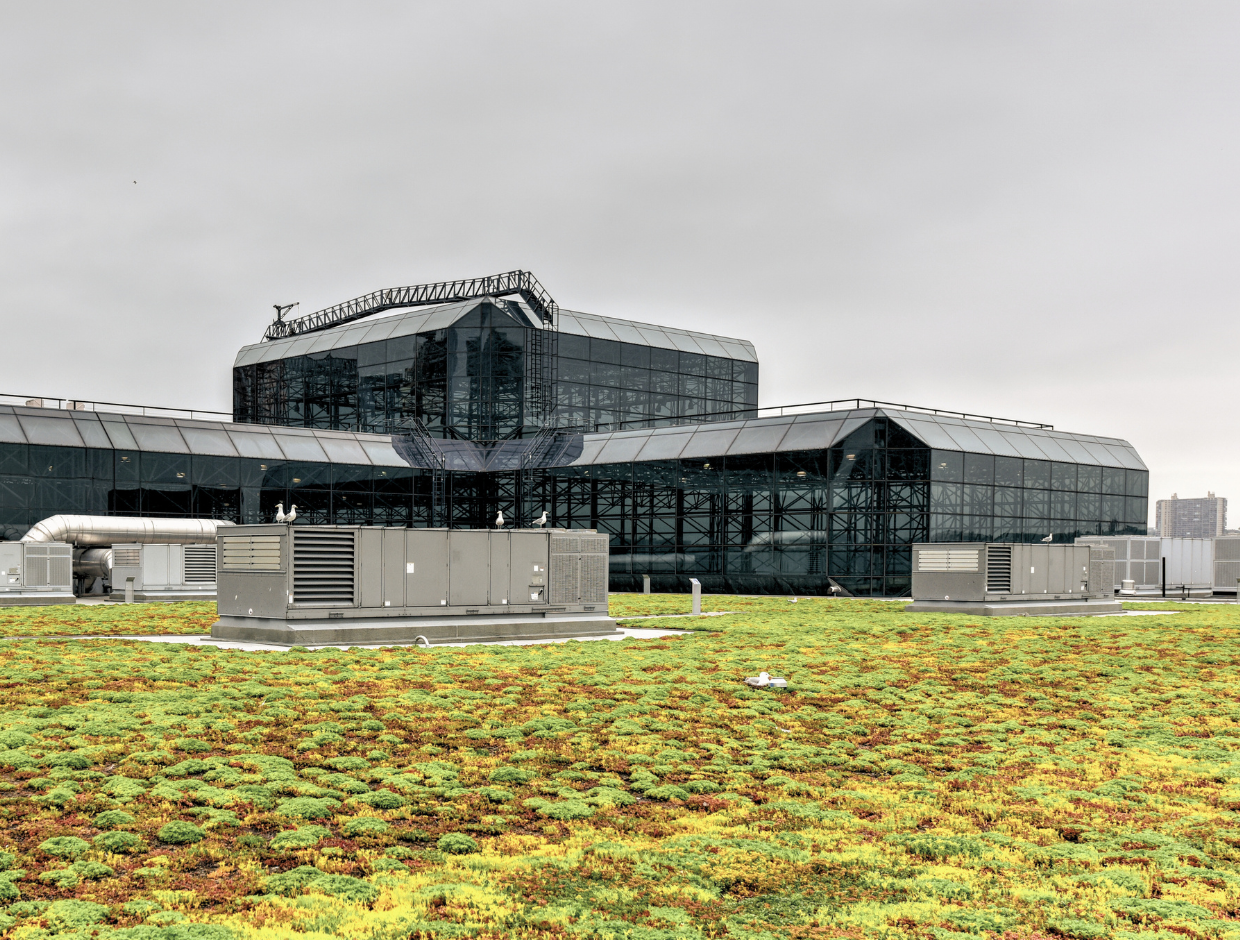

Super Bloom 2024: Where to See Wildflowers in California
Summary
Reflection Questions
Journal Prompt
A super bloom is a rare, breathtaking phenomenon where an unusually high number of wildflowers blossom simultaneously, carpeting vast landscapes in vibrant hues of Baby Blue Eyes, Desert Lily, orange poppies, and other fresh flowers. This extraordinary event, primarily driven by perfect synchrony of winter rains and warming spring temperatures, transforms California’s deserts and hills into stunning, ephemeral artworks of nature. Typically occurring between late March and early summer, these beautiful flowers in California draw visitors from around the globe, eager to witness the spectacle. However, the beauty and fragility of a super bloom underscore the importance of respecting the natural environment. It’s crucial that we tread lightly, adhere to designated paths, and leave no trace behind, ensuring these wonders continue to wow visitors to San Francisco, Central, and Southern California for years to come. (So never take a California poppy to create your own flower arrangements at home—even if you’re celebrating a special occasion.)
Factors Influencing the Super Bloom
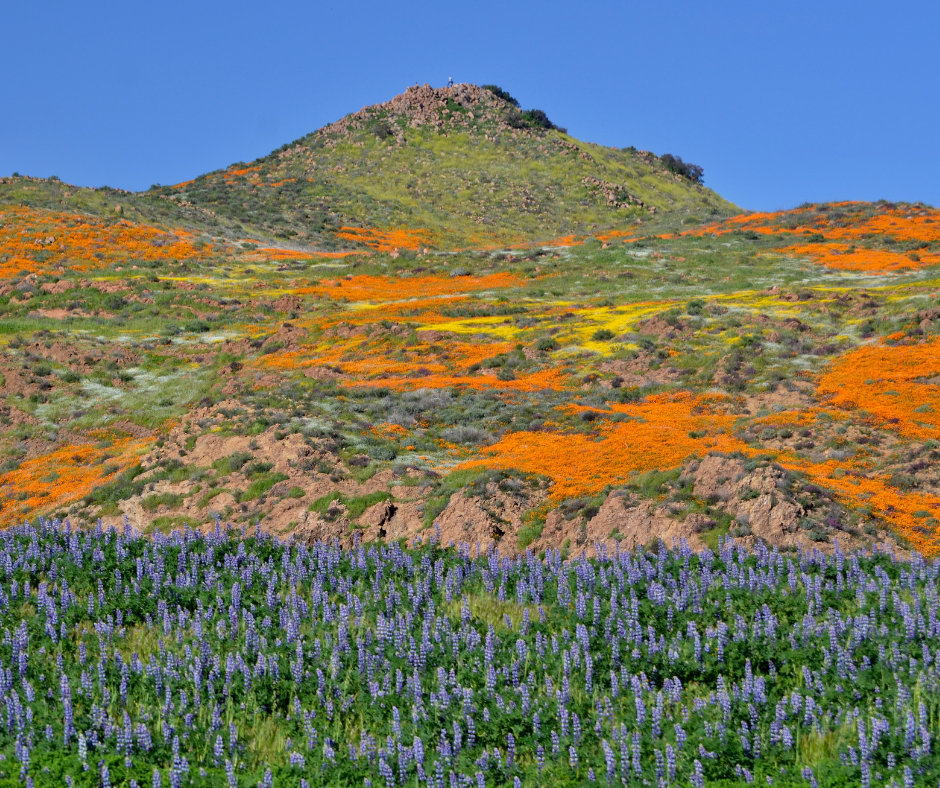

These phenomena require a harmonious blend of increased rainfall during the winter months, followed by a gradual transition to warm days with full sun in the spring. The rain saturates the desert soil, awakening seeds that have lain dormant, sometimes for years, under the arid conditions typical of California’s landscapes.
Furthermore, the absence of strong winds or early heatwaves during the early stages of germination and growth is crucial, as these can desiccate the tender shoots before they mature. This delicate balance of moisture, temperature, and protection allows for the synchronized blooming of millions of flowers across the state’s diverse ecosystems.
How Climate Change Might Affect the Frequency and Intensity of Super Blooms
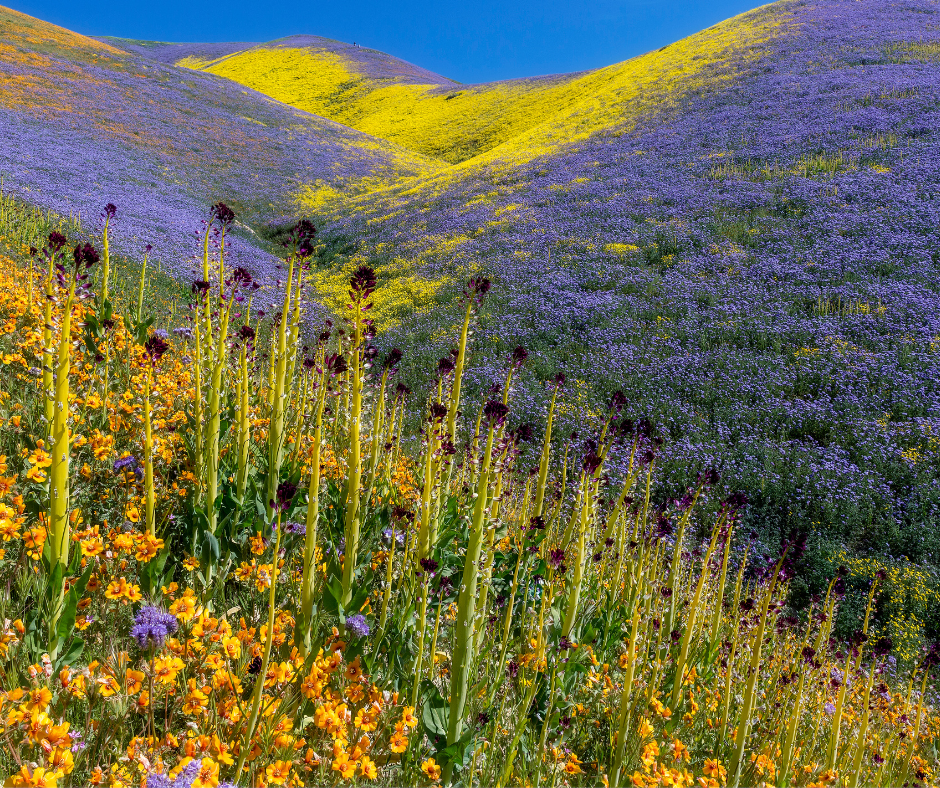

Climate change poses a significant threat to the delicate ecological ballet that enables super blooms. Alterations in global weather patterns can lead to more erratic precipitation, with prolonged droughts punctuated by intense periods of rain, disrupting the regularity and balance needed for seed germination.
Additionally, increased temperatures may shift the blooming window, affecting the synchronicity that defines a super bloom. Early heatwaves or unseasonal warmth can trick plants into blooming prematurely or desiccate the landscape, diminishing the bloom’s intensity. There’s also the concern that climate change could lead to the migration of plant species to higher elevations or latitudes, potentially altering the traditional super bloom regions.
Why We’ll Probably Have a Super Bloom in 2024
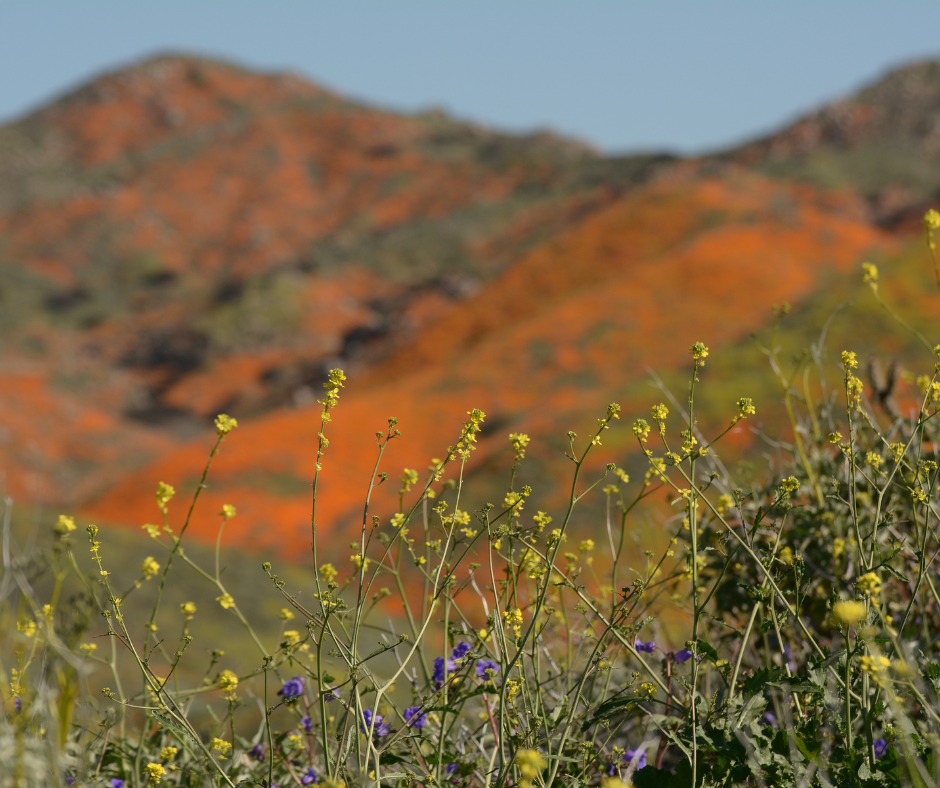

Predicting a super bloom in 2024 hinges on the climatic precursors observed in the preceding months. The region has experienced higher-than-average rainfall during the winter, closely mirroring the patterns historically responsible for triggering super blooms. This, coupled with forecasts suggesting a mild, steady warming into spring without the abrupt onset of high temperatures, sets the stage for a potential super bloom.
Additionally, years of drought conditions prior have left a significant seed bank ready to burst into life, given the right conditions. These factors, aligned with the increased moisture retention of the soil from the recent rains, suggest that California is on the cusp of a spectacular super bloom in the coming spring, offering a silver lining to the state’s weather challenges.


are you a fine artist or photographer?
Best Locations to Witness the Super Bloom in California
Anza-Borrego Desert State Park
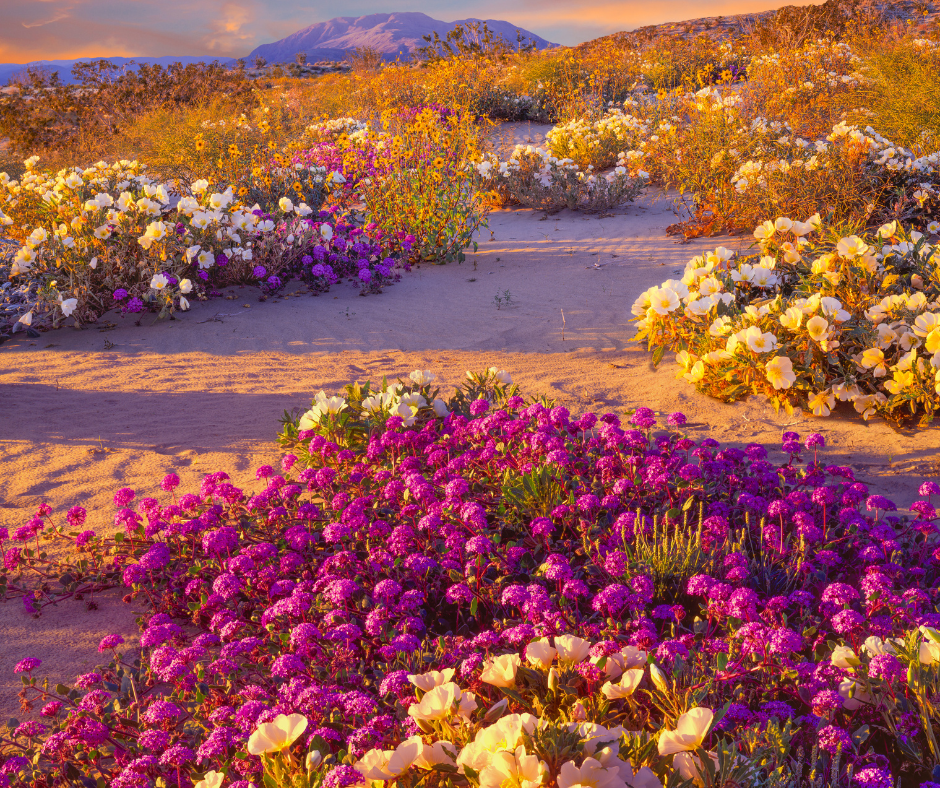

Anza-Borrego Desert State Park, California’s largest state park, offers an unparalleled canvas for the super bloom, with vast, arid landscapes suddenly bursting into life. The park becomes a mosaic of color, with desert sunflowers, purple sand verbena, and delicate desert lilies stretching as far as the eye can see.
For the best experience, visitors are advised to come during the cooler morning hours to avoid the midday heat and ensure better photography lighting. Accessing the park is easiest from the small town of Borrego Springs, which serves as a gateway to various viewing spots. Check local reports or the park’s website for the most current bloom locations.
Antelope Valley California Poppy Reserve
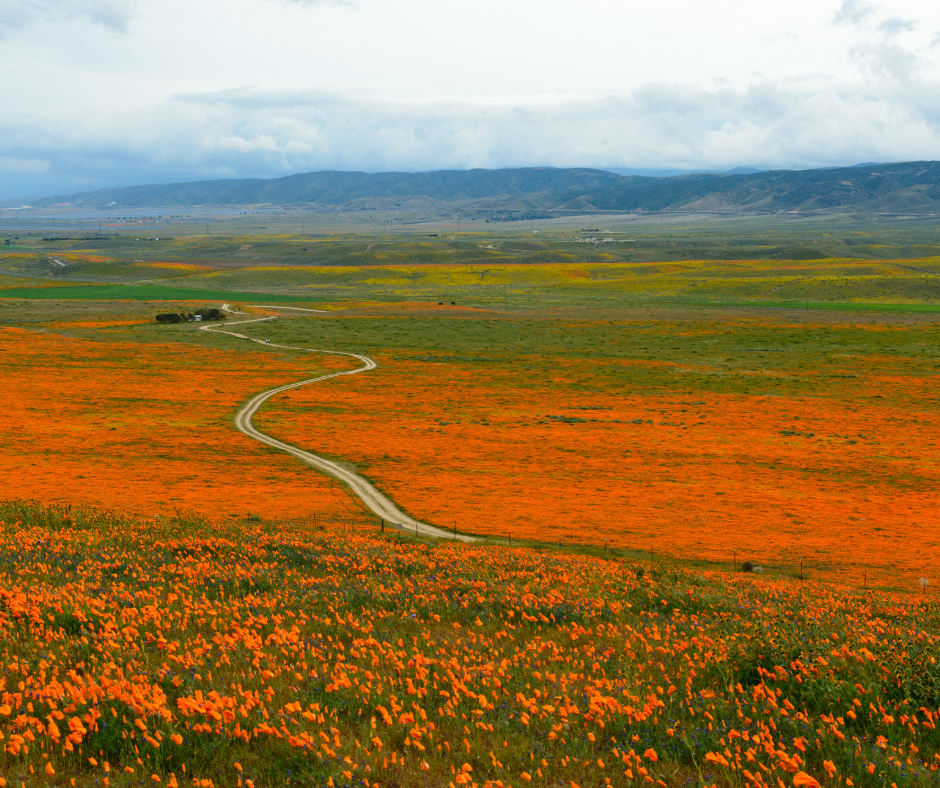

Located in the high desert of Los Angeles County, the Antelope Valley California Poppy Reserve becomes a mesmerizing sea of orange as the state flower comes into full bloom. The reserve’s rolling hills offer panoramic views of the poppy fields, with the best vantage points along the park’s network of trails, particularly the Antelope Loop Trail which provides stunning overlooks. Visitors are reminded to stay on designated paths to protect the fragile poppies and are encouraged to use the on-site facilities, including a visitor center with educational exhibits on the area’s natural history.
Joshua Tree National Park


Joshua Tree National Park, known for its rugged rock formations and stark desert landscapes, reveals a softer side during a super bloom. Here, the bloom includes a variety of cacti flowers, Joshua tree blossoms, and wildflowers like the Mojave aster and desert mariposa lily. The blooms are often found in the lower elevations of the park, particularly around the Pinto Basin and along the Bajada Trail. Visitors should practice Leave No Trace principles to minimize impact on the park’s ecosystems and are encouraged to visit during the weekdays to avoid the crowds.
Death Valley National Park
The super bloom in Death Valley National Park is a rare and fleeting miracle, transforming the “hottest, driest, and lowest” national park into a wonderland of life. This spectacle is so rare because it requires a precise combination of early winter rains and the absence of drying winds. When conditions align, the valley floors and alluvial fans are covered in a carpet of gold, pink, and purple. Due to the park’s vastness and the potential for extreme temperatures, visitors are advised to carry plenty of water, use sun protection, and check the National Park Service’s website for bloom updates before visiting.
Carrizo Plain National Monument
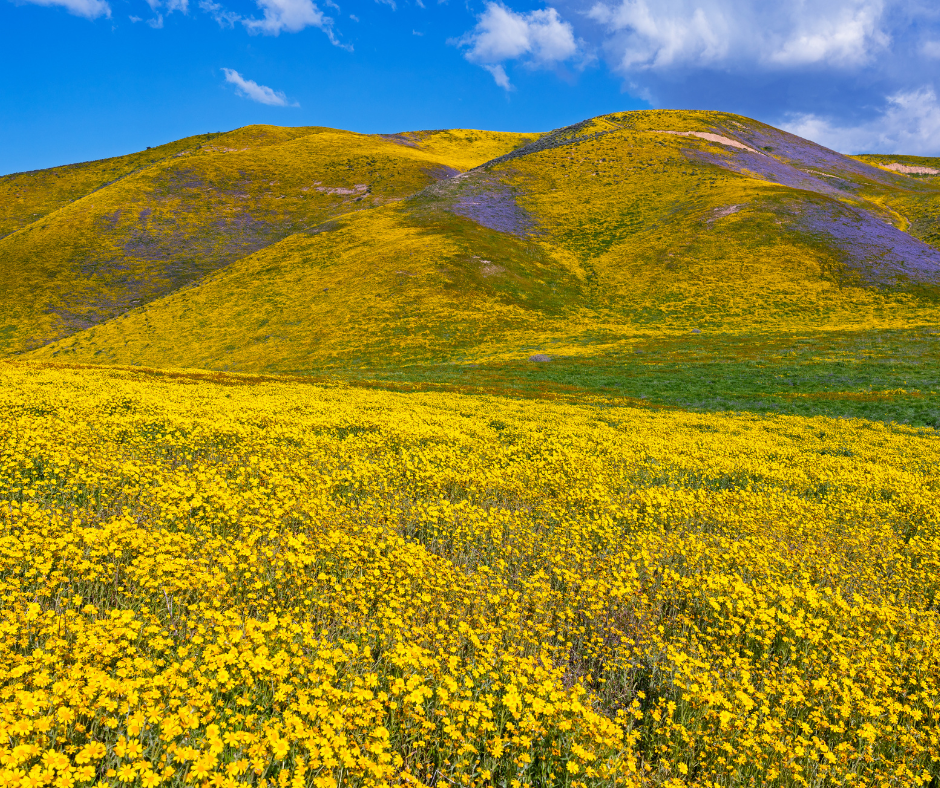

Last year, Carrizo Plain National Monument witnessed a super bloom that painted its hills in vibrant yellow and blue, captivating visitors with its stunning displays of goldfields and lupines. This remote valley, nestled in Central California, is less crowded than more famous bloom locations, offering a serene viewing experience.
The best viewing spots are along the scenic drive on Soda Lake Road and the trails that branch off from it, providing close-up encounters with the blooms. Visitors should come prepared with full gas tanks and supplies, as amenities are limited in this secluded area. The monument’s unspoiled beauty is a perfect backdrop for those seeking to immerse themselves in the tranquility of nature’s artistry.
Tips for Enjoying the Super Bloom Responsibly
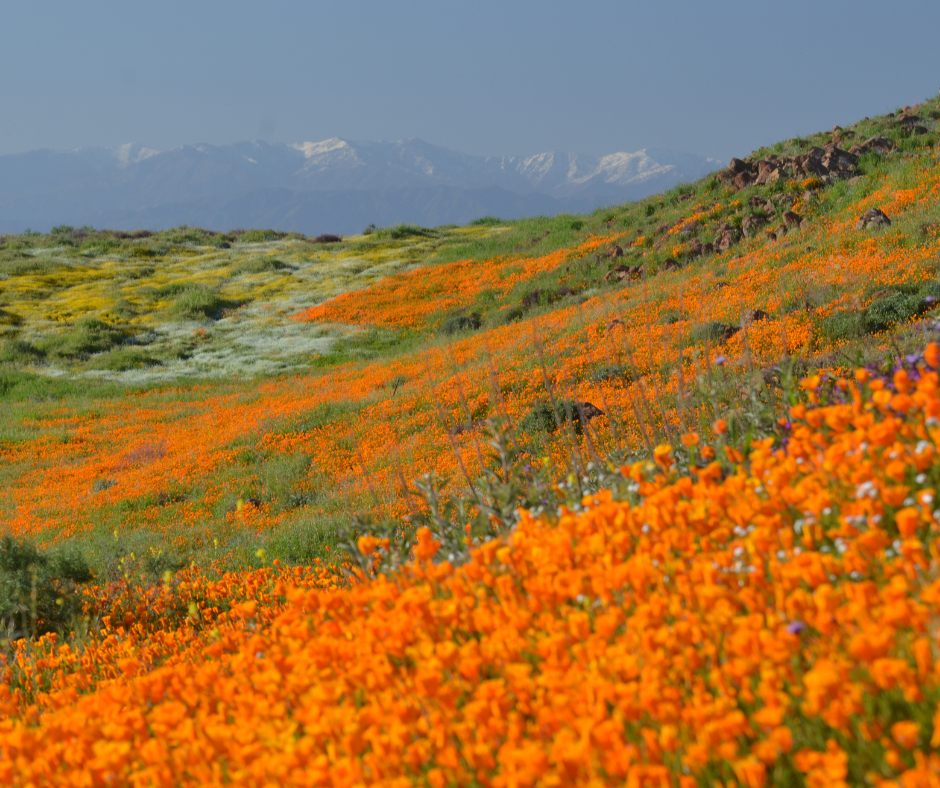

Embracing the super bloom in California is a privilege that comes with the responsibility of ensuring these natural phenomena remain undisturbed for future generations to enjoy. Adhering to Leave No Trace principles is fundamental; visitors should avoid picking flowers or leaving any form of trash behind, ensuring that the only thing they take are photographs and the only thing they leave are footprints—ideally on established paths only.
Photography, while encouraged, should be done with etiquette and care, avoiding trampling over the delicate habitats just to get a closer shot. It’s crucial to use zoom lenses and stick to designated trails to minimize disruption to the flowering fields. When planning a visit, especially to the most popular locations, consider arriving during off-peak hours to avoid contributing to overcrowding; early mornings or weekdays can offer a more solitary experience. Always park in designated areas, observe all posted signs, and respect private property boundaries to maintain a positive relationship with local communities.
Safety should never be overlooked; remote and rugged areas require visitors to come prepared with adequate water, sun protection, and appropriate footwear. By following these guidelines, everyone can contribute to the preservation and appreciation of California’s super blooms, ensuring they continue to be a source of awe and inspiration.






